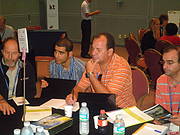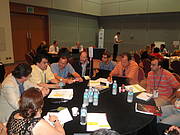Getting real: working with local authorities to save South America’s Gran Chaco
07 September 2012 | Article
The Gran Chaco is the largest dry forest in South America and the continent’s most extensive forested region after the Amazon. As many other ecosystems it is under pressure, mainly due to agriculture activities and changes in land use, and of course, climate change.
In the last five years the rate of deforestation has been around 1,000 hectares per day. But action is being taken by IUCN Member Nativa who is working with local authorities in Bolivia to develop climate change adaptation plans which involve conserving forests.
In Bolivia there are around 20 municipalities in the Chaco region. “Municipalities represent local action in the territories”, said Marcela Zamora, Nativa expert in a workshop here at the IUCN Congress. “Many of them have a strong commitment to develop adaptation local plans and others are on the same path”, said Ivan Arnold, Nativa Director.
But one of the major weaknesses of these municipalities is the lack of human and finance resources. Across the Gran Chaco, including Argentina and Paraguay, there are more than 100 municipalities so coordination among all of them is also a big challenge.
For Nativa who organized the workshop, this was a great opportunity to understand how other countries and regions are developing adaptation plans, but it also showed that practical experience is still limited.




